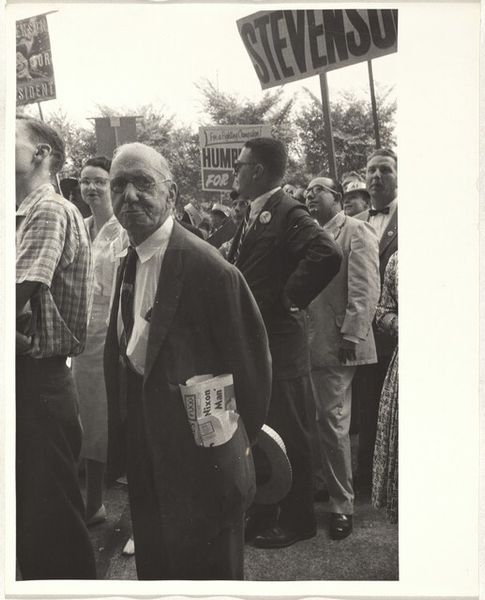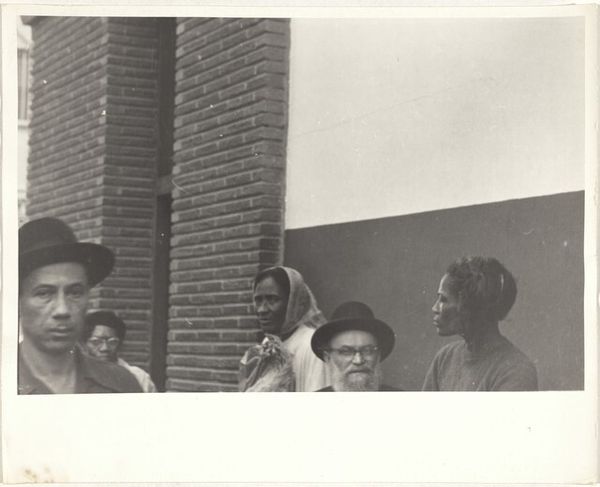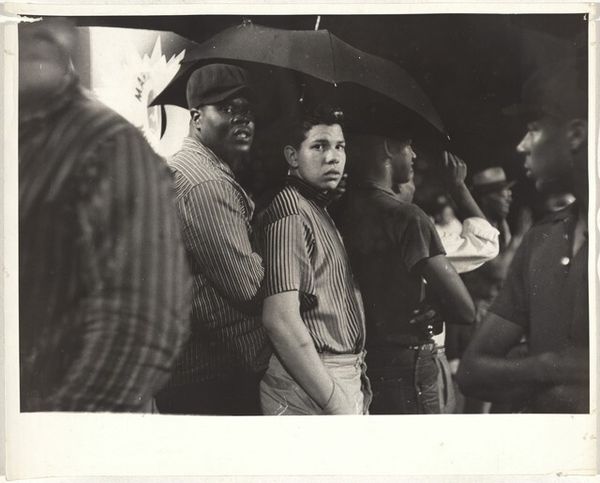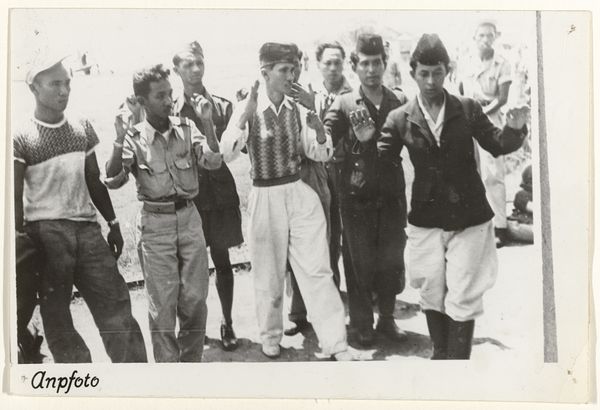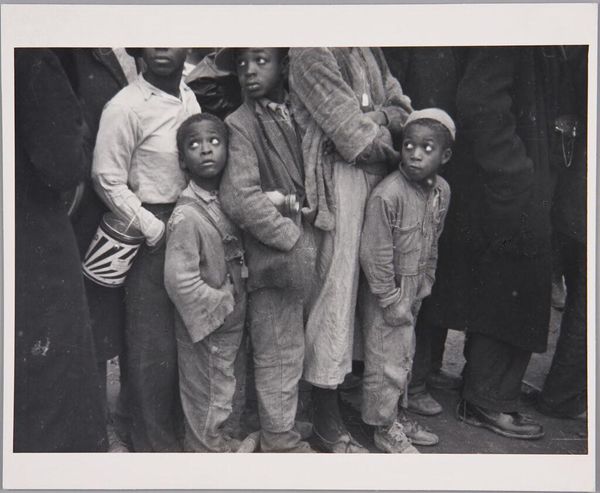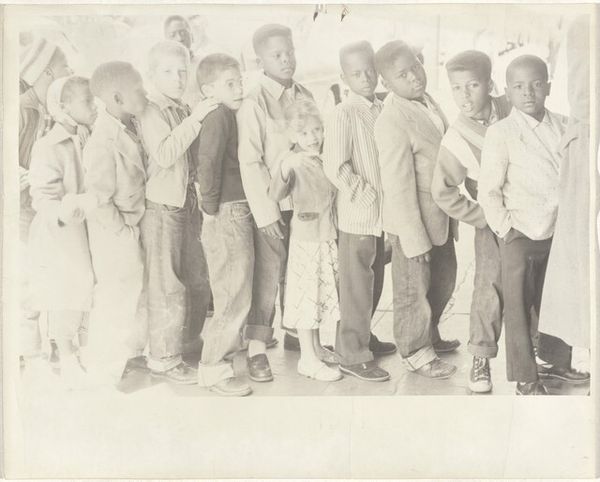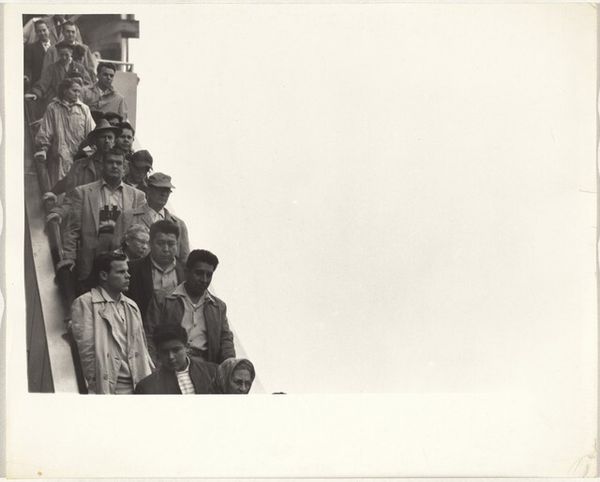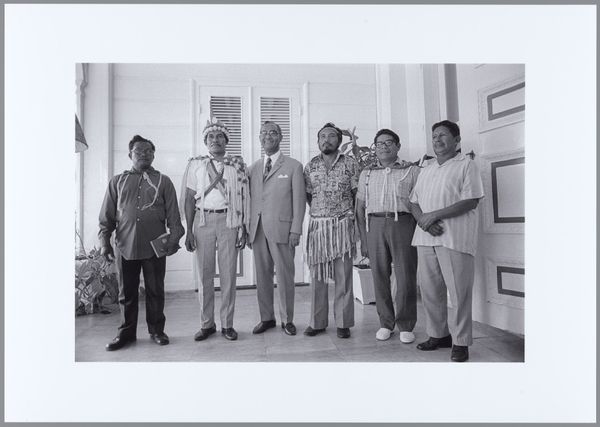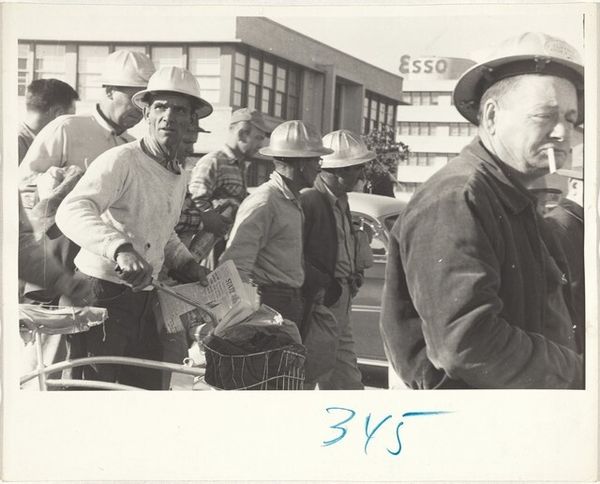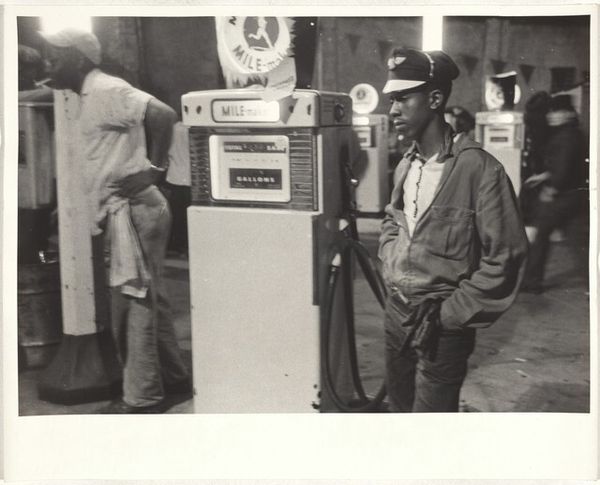
Dimensions: sheet: 20.2 x 25.3 cm (7 15/16 x 9 15/16 in.)
Copyright: National Gallery of Art: CC0 1.0
Editor: This is Robert Frank’s "Youths at gas station--Indianapolis," taken in 1956, a gelatin-silver print. There's a striking immediacy in how these young people are presented, a casual yet profound glimpse into their everyday lives. What strikes you most about it? Curator: The photograph speaks volumes about the accessibility of leisure and mobility offered by the gas station, itself a nexus of consumerism. Frank's choices concerning the print--the specific paper, the development process–become paramount. The image isn’t just *of* these youths, it’s a *product* intimately tied to mid-century manufacturing processes and its role in defining American identity. Editor: So, it's about the physical creation and consumption cycle rather than solely the content? Curator: Precisely! The stark contrasts, the graininess; these aren't accidental. They reflect the industrial processes, making the photograph less about pure representation and more about the materiality of photographic practice itself, the labour involved in bringing that image to life, and the socioeconomic implications of mass media at that time. Consider the distribution networks that allowed Frank's work, and similar imagery, to circulate and shape perceptions. Editor: That’s a perspective I hadn't fully considered. It connects the artistic moment to the bigger social picture, particularly regarding labor and means of production. Curator: Exactly. It prompts us to think critically about how the photographic medium, as a material product, played an active role in constructing and disseminating ideas about youth culture and race within a consumerist landscape. This forces us to examine both the act of production and the consumption of the photograph. Editor: It's fascinating how focusing on the materiality and the process behind the photo provides a richer understanding. Thanks. Curator: My pleasure. Seeing art through the lens of production makes you question who profits and who is impacted by the circulation of such images. It changes everything!
Comments
No comments
Be the first to comment and join the conversation on the ultimate creative platform.

